Are you looking for something new to try in the garden this year? Here are 10 fun annuals that I’ve enjoyed having in my garden. All are easy to grow from seed.
***

Ipomoea lobata, formerly Mina lobata
Spanish flag, firecracker vine, exotic love vine
8–10 ft.
Full sun
Although I’d admired it in catalogs, I held off on growing Spanish flag for years, because I assumed that something so exquisite must be near-impossible to grow. Then, I saw it in person at the Edgefield McMenamins in Troutdale, Oregon. It was glorious!
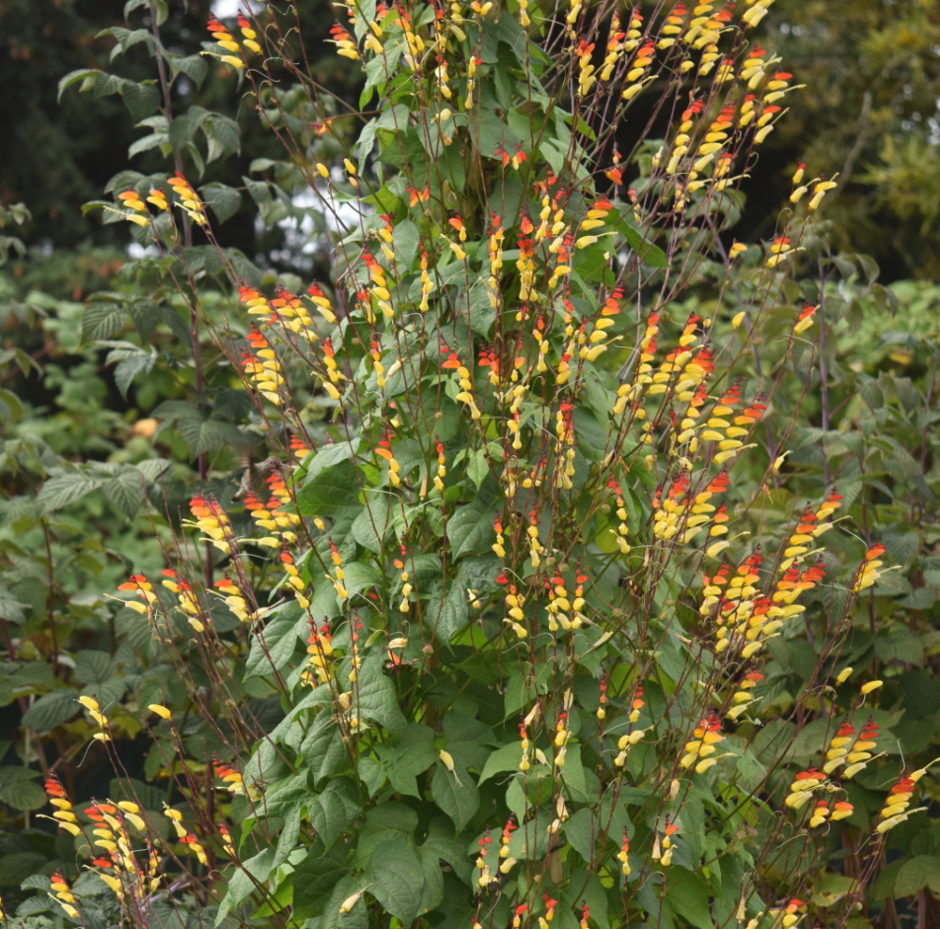
The next year, I grew a couple of plants in my backyard. They were magnificent. They quickly twined up my bamboo teepee, clothing themselves in lush green foliage. In mid-summer, they started throwing out tubular red, orange, yellow, and white flowers, which the hummingbirds doted on. (Can you spot the hummer in this photo?)
Spanish flag is a morning glory relative native to Mexico and Brazil. It loves warm weather when getting started. By fall, however, it’s much more tolerant of cool temperatures and may bloom until frost. I started my seeds indoors under lights and set them out in the garden after the soil had warmed. You could also sow them directly in the ground or in a large pot.
Don’t overfertilize, or you will get more leaves than flowers.
***

Cardiospermum halicacabum
Balloon vine, love-in-a-puff
8–10 ft.
Full sun, part shade
You may think that balloon vine made my list of fun annuals because of its papery, puffy seedpods that really do look like balloons. You would not be wrong.
But there’s more. When you open up those seedpods in fall, you’ll find three perfectly round, hard, black seeds, each stamped with a white heart. Hence, the names Cardiospermum (“heart-seed”) and love-in-a-puff. Adorbs!

Balloon vine has a wide native range that extends to subtropical and tropical Australia, Africa, and North America. It has become troublesome in hot, humid parts of the U.S. Please don’t grow it in Alabama, Arkansas, Texas, or South Carolina, where it has been deemed invasive, and plant it only with extreme caution in other parts of the Southeast.
Where it is safe to grow, balloon vine makes a perky plant that climbs via tendrils. It’s fast-growing, but it doesn’t get bulky, and you can let it scramble up a shrub without worrying that it will smother it or weigh it down.
***

Tithonia rotundifolia
Mexican sunflower
4–6 ft.
Full sun
Mexican sunflower is about as subtle as a punch in the face. This is a big, beefy plant with big, beefy leaves and chunky flowers the color of hunting vests. I grew it in my Kentucky garden with the equally bold companions, cup plant (Silphium perfoliatum) and purple-leaved castor bean (Ricinus communis ‘Carmencita’). Wiry Verbena bonariensis made a nice textural contrast and cooled things down with its lilac flowers.
Mexican sunflower is a stellar butterfly attractor. It’s especially appealing to monarchs.
Give Tithonia all the sun you can and regular water.
***
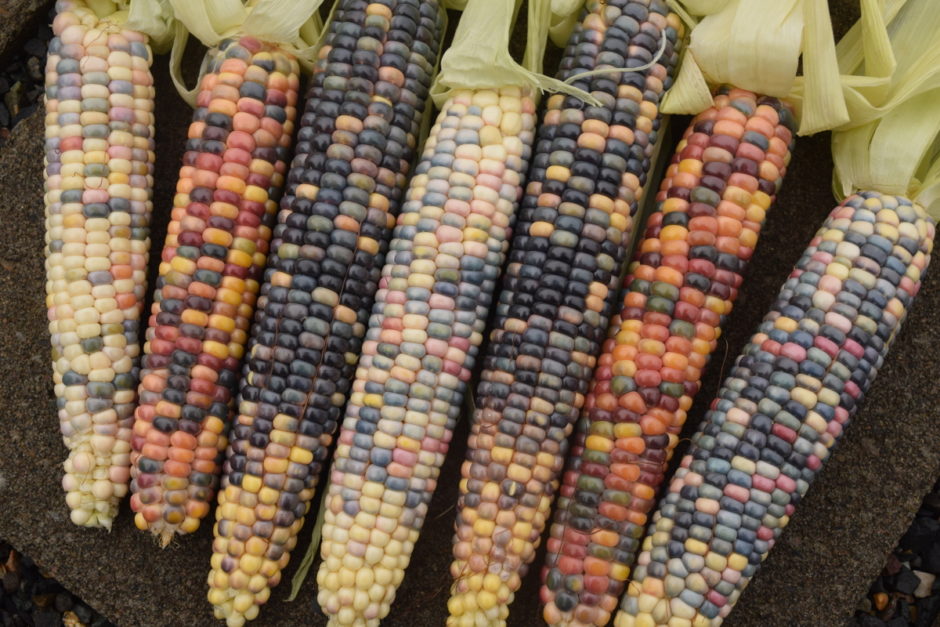
Zea mays ‘Glass Gem’
Glass Gem ornamental corn
8 ft.
Full sun
Blue roses, purple pampas grass, rainbow-colored tomatoes. There are lots of gardening scams on the interwebs, and in 2012, Glass Gem corn seemed to be yet another one. “The most beautiful corn in the world!” “A seemingly endless spectrum of jewel-tone colors!” Yeah, right. How gullible do they think I am?
Well, I grew Glass Gem last year, and it was the most beautiful corn in the world. Last fall, a reporter named Melissa Sevigny wrote an article about Glass Gem for NPR. In it, she quotes the instructor of a seed-sowing class who reminisces about taking her students out to harvest their first crop of the corn. “People were crying in our class,” she says, “they were literally crying, it was so beautiful.” Yeah. When I peeled the husks back in October, it was pretty much like that.
Now, I will say that the ears were smaller than I expected. And the colors did fade somewhat a week or two after I picked them. (Did I pick them too early?) But still, amazing. And when you get tired of gazing at the kernels, you can pop them. My friend Tamara did that a few years ago.
***
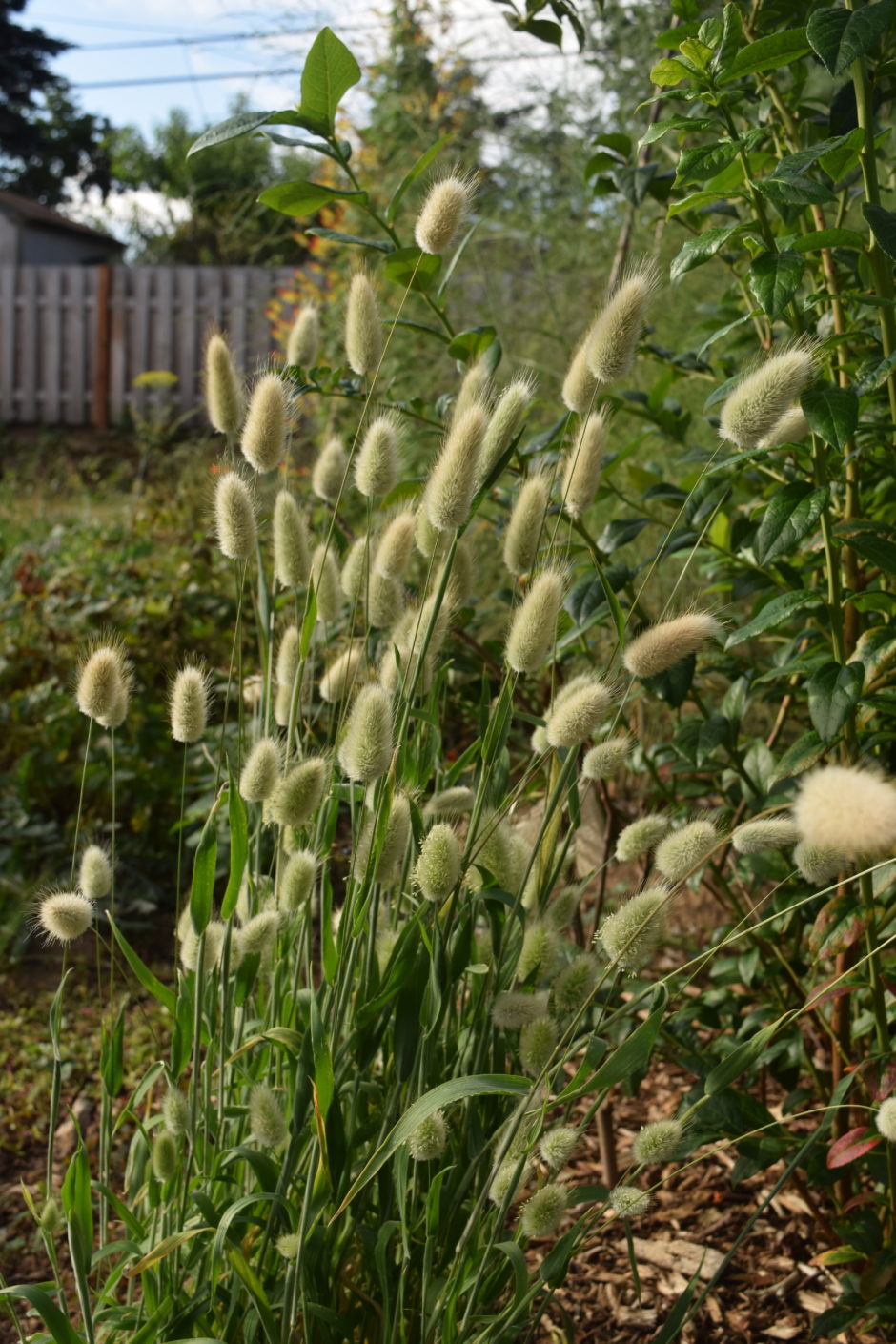
Lagurus ovatus
Bunny tail grass
18 in.
Full sun
As they say in Minnesota, “Oh, for cute!” I got seeds of bunny tail grass at a seed swap one year, and it was everything the catalogs promise: dozens of fluffy white cottontail plumes that you just want to pet. Even the foliage is silky-soft.
Don’t confuse this plant with ‘Little Bunny’ grass. That’s a Pennisetum and a perennial. This bunny grass is related to the beautiful but widely invasive Imperata cylindrica, best known in its red-leaved form, ‘Red Baron’.
Lagurus ovatus has proven to be invasive in Australia, but it isn’t a problem in the U.S. as far as I know.
Bunny tail grass is native to the Mediterranean. I imagine that makes it fond of our dry summers here in Oregon. In a rainier climate, it may not hold up so well. Have you grown it where summers are wet?
***

Thelesperma burridgeanum, formerly Cosmidium burridgeanum
Burridge green-thread
12–18 in.
Full sun
Burridge green-thread isn’t exactly a household name, but this Texas wildflower is a worthy plant to grow in your garden all the same.
I have grown the strain called ‘Philippine’, and here’s what it does. This is a wispy thing that grows lightning-fast from seed. The leaves are skinny like Coreopsis verticillata, and the flowers are also coreopsis-like, gold with a broad mahogany eye. The best part, though, is that the blossoms smell like CHOCOLATE.
The downside is that Burridge green-thread doesn’t bloom very long. You can sow several batches if you want summer-long bloom, but I usually don’t bother. I just pull them out (saving a few for seed) and let the neighboring plants fill in. The dainty plants take up hardly any room at all, so it doesn’t take long for the gaps to disappear.
***
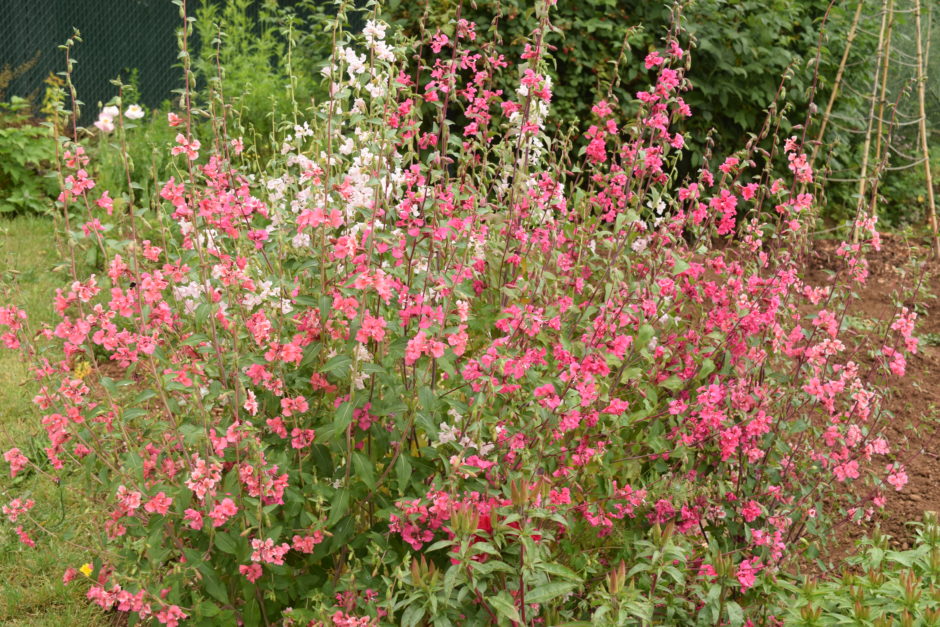
Clarkia unguiculata, formerly Clarkia elegans
Elegant clarkia
30–36 in.
Full sun, part shade
I’ve grown a few different clarkias, and my favorite so far has been elegant clarkia. This California native makes a bushy plant adorned with loads of flowers in shades of peachy-pink, rose, mauve, or white. Bumblebees adore them. When I grew this, I would just sit in the grass and watch the bumbles dive in and out of the flowers. A natural beta blocker.
In California, elegant clarkia germinates in the fall rains, blooms in late spring and early summer, and goes to seed as the harsh summer heat and drought hit. In cold-winter climates, you’ll want to sow seeds in spring rather than fall. Sow them directly in the ground and thin later.
***
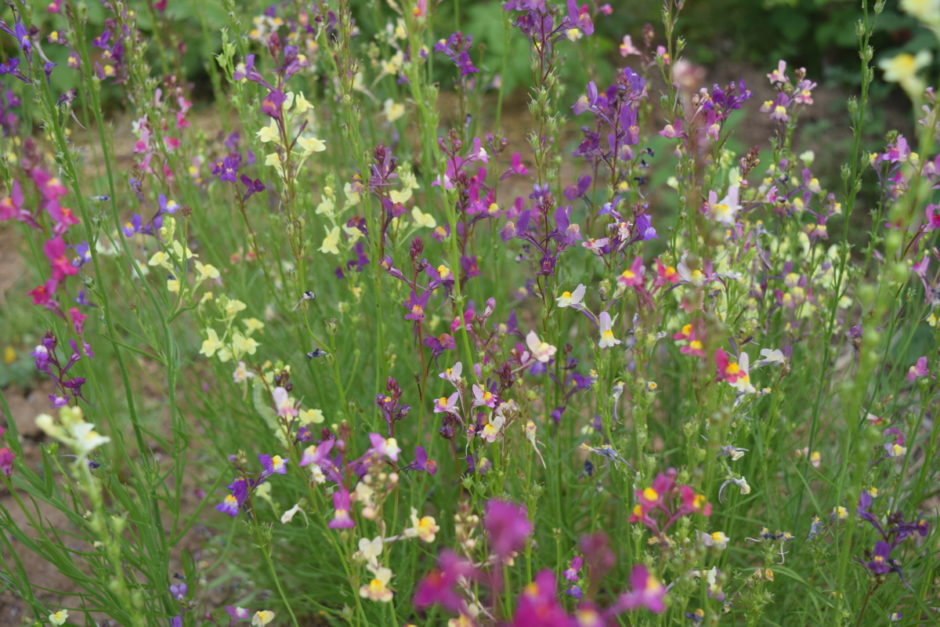
Linaria maroccana
Toadflax
12–18 in.
Full sun, part shade
When it comes to toadflax, catalogs lie. Seed vendors often show closeups of flowers in tight bunches, as they would appear in a bouquet. In reality, the plants are wispy growers and flowers are tiny, but that’s OK. Toadflax is adorable! The spritely plants, like miniature snapdragons (a close relative), bring a playful touch to the garden. Teeny blossoms sparkle in hues of pink, purple, yellow, and white (there are bi-colors and tri-colors, too). I believe the strain I grew a few years ago was called ‘Fairy Lights’.
Linaria maroccana, as you may guess from the name, hails from Morocco. Like many wildflowers from Mediterranean climates, it flourishes in cool weather and wants to get its blooming done before extreme summer heat and drought kick in. Sow the seeds directly in the garden (or in a pot on the patio) in late winter or earliest spring. Have something ready to fill the gaps when the blooms peter out around late July (or earlier if you live where summers are especially hot).
***
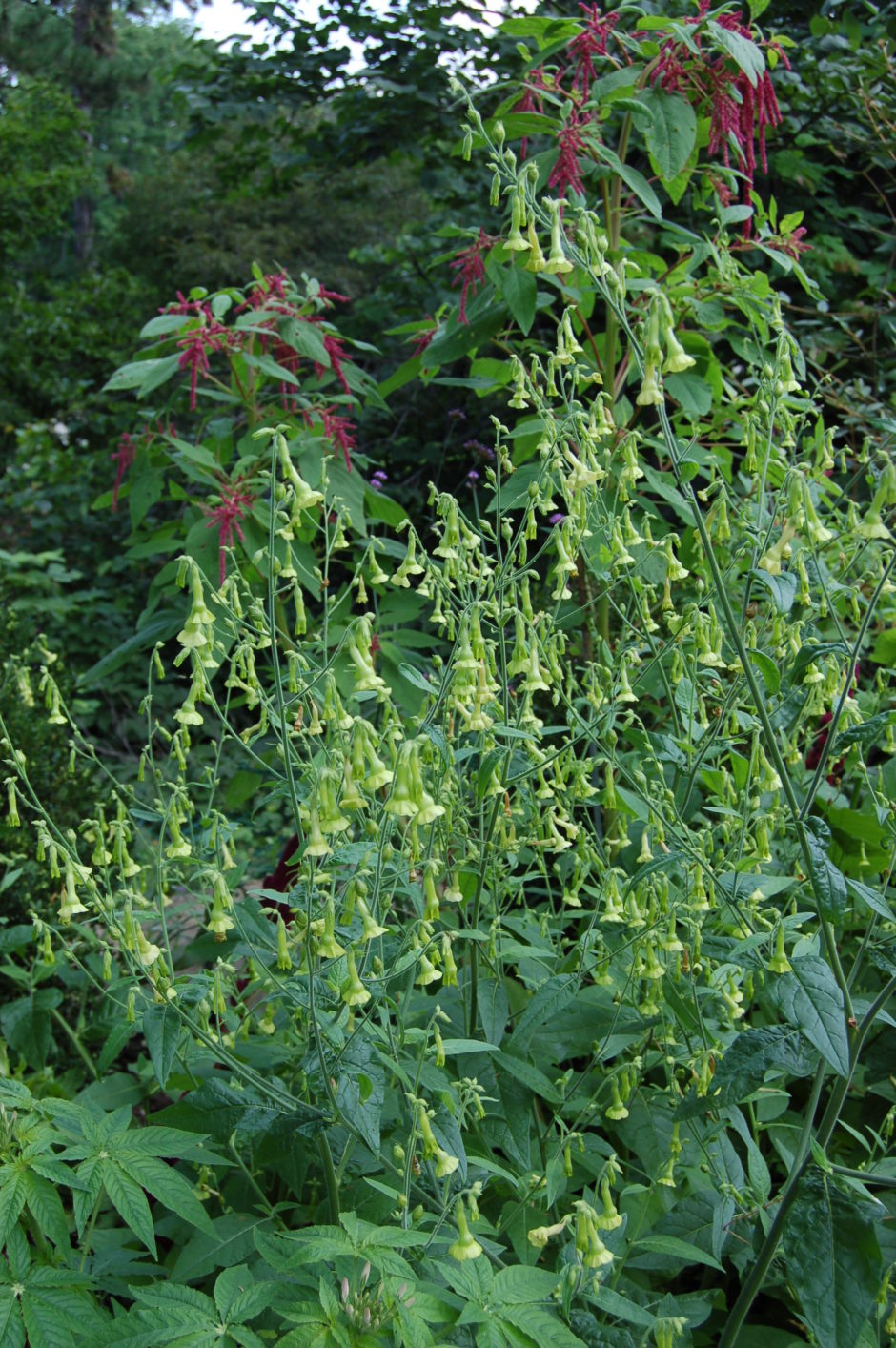
Nicotiana langsdorffii
Langsdorff’s tobacco
3–4 ft.
Full sun, part shade
I’ve been bingeing on fitness videos lately. In many of them, my favorite Youtuber, Jeff Cavaliere, says over and over again that nothing worth having is easy. Not true! Nothing could be easier than Langsdorff’s tobacco, and it is so, so satisfying. This elegant Brazilian/Chilean native produces a plethora of little chartreuse bells over a crazy-long season. True story: in mid-January this year I saw it still blooming at Edgefield McMenamins. Granted, we’ve had a California winter so far, but it has gotten down below freezing a few times.
It’s hard to overstate the value of chartreuse in the garden. It complements literally every other color. Plant it with blue flowers, and you’ll be more likely to notice the rich blue anthers peeking out from inside the bells—a sweet touch.
Langsdorff’s tobacco does interbreed with another Nicotiana I like to grow, a maroon-flowered form called ‘Chocolate’. Seedlings from this union often have murky colors, so just grow one or the other if you want to keep your seed pure.
***
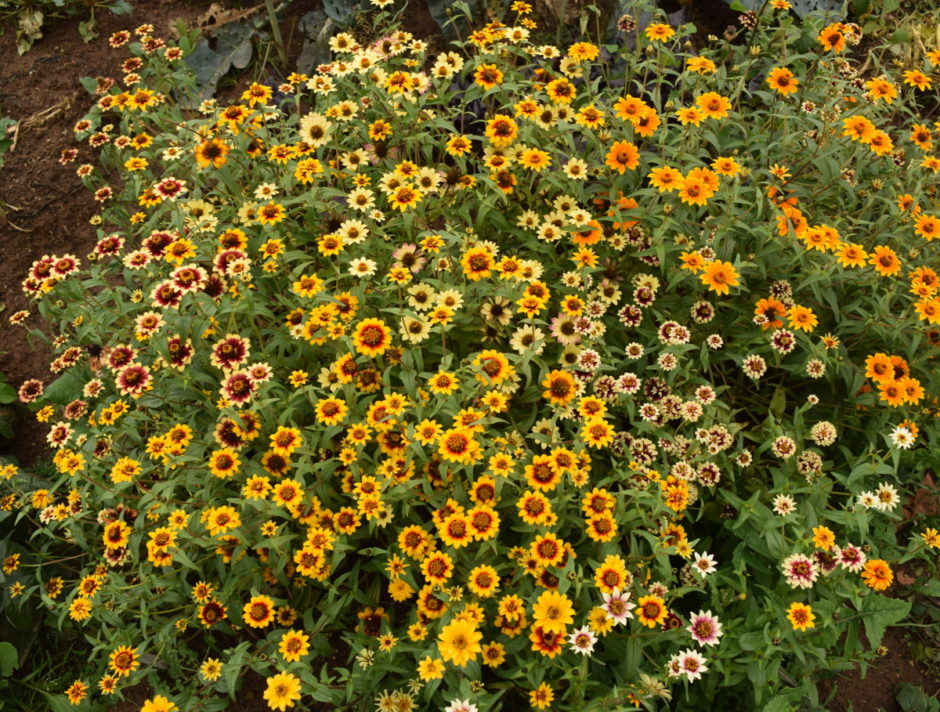
Zinnia haageana
Mexican zinnia
16–24 in.
Full sun
You’ve probably grown the large-flowered zinnias at some point in your life, but have you ever tried Zinnia haageana? This compact, small-flowered cutie is one of my favorite annuals. It’s undemanding, adaptable (I’ve grown it in both the East and the West), and so charismatic. The strain I grow is ‘Persian Carpet’, a mix of pale yellow, gold, orange, red, crimson, and white flowers in solids and bi-colors. There are endless variations in the details, but all the colors go together perfectly, like a real Persian carpet.
Sow these directly in the garden or in a large pot after the last frost. Thin to about eight inches apart once they’re up and growing.


I’ve got my ‘bunny tail seeds’ this year ! Last year I forgot to order them. I did find a few self seeders dotted around though .
Ooh, such great ideas! The Spanish flag seedling you gave us a few years back turned out to be fantastic – and a fast grower once it got going. It totally covered a makeshift tripod in the veggie garden and draped itself down the side of the retaining wall and around the chairs. Very cool. I think I’d like to try the Linaria this year, it’s so pretty. Well, they all are. And thanks for the corny shout-out! Cheers!
Deer are a problem in my yard. Are any of these deer resistant? Your photography is really beautiful!
I grew the bunny tail grass one year at Spring Grove. The July thunderstorms did it in. But that was in the ground. Maybe I will try it again in containers. Love in a puff is super fun.
So many great plants, Amy! Awesomeness!!
Brian
Okay, I guess I need to give Ipomoea lobata another try. The one time I grew it all I got were leaves, a lot of leaves. I’ve seen your babies doing well at Heather’s and Tamara’s.
I’ve grown several of these and grow the little zinnias every year. I grow all my annuals from seed and already have seeds for the little zinnias. Yay!
Giving a few of these a try this year, thank you!
Hi Amy,
Margaret and I are from the Mediterranean. We Love figs and fig trees. We’ve been trying to grow one in Cincinnati. So far it seems to thrive in the summer then it looses all its leaves in the winter. So far no figs either. Any ideas?
Hello Amy, I really enjoyed reading your article about seeds to grow this year, I found it very helpful. Thank you, Richard
I have to agree with you, ornamental corn is something amazing! Some people say that it looks a big strange but I really like it and I have never seen anybody else growing it. I ordered mine on https://gardenseedsmarket.com/ornamental-corn-glass-gem.html in quite cheap price. It was sprouting quite long but then it shot up! Next year I have to try growing Cosmidium from seeds, I have never tried it but it looks very pretty!
Now it is March 2021 and I am just reading this post! Spanish Flag sounds enticing. I love Tithonia- Mexican Sunflower, but so do the deer- all attempts to make it taste bad failed and the plants kept being eaten- same happened to my large zinnias- I like your posts- I live in Maine but still find them applicable for the most part- thank you for interesting, informative “garden candy”
love this information. Beginning from scratch in a shade garden so appreciate reading about these plants